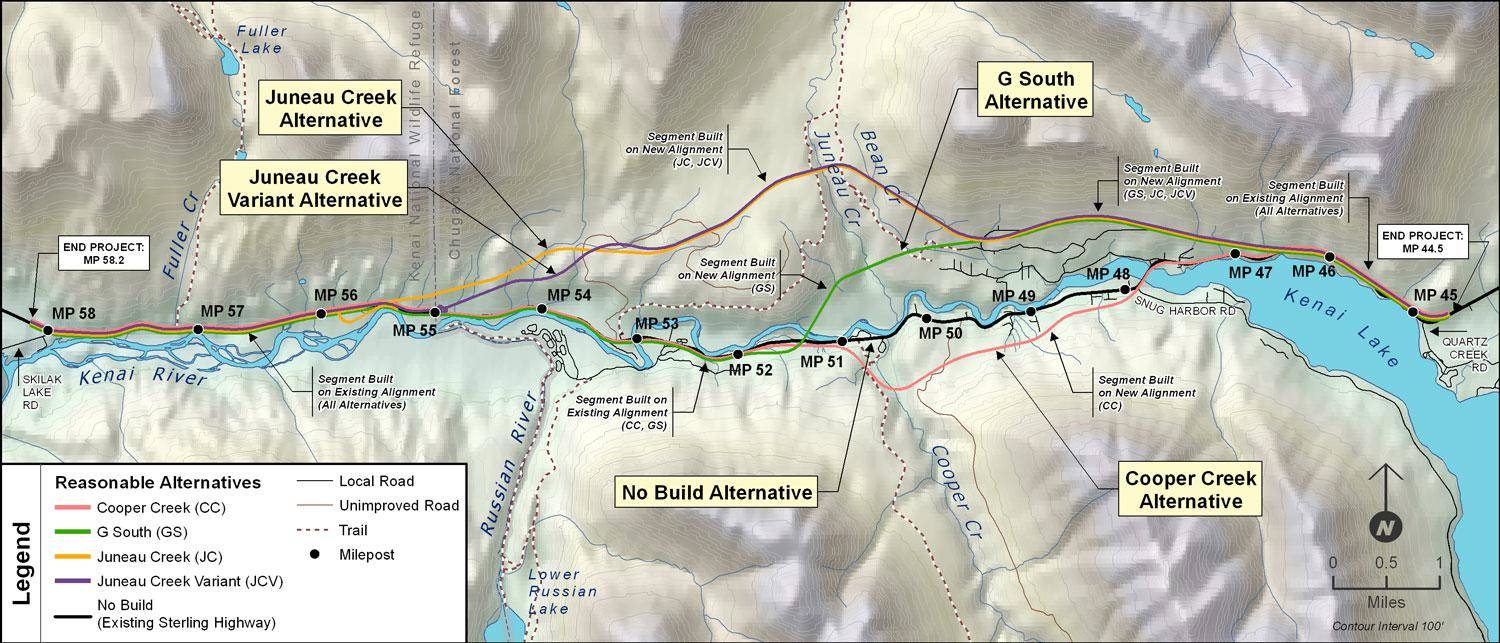Gov. Bill Walker and Alaska’s congressional delegation are asking for a resolution in the long-running dispute on how to build a 15-mile bypass of a section of the Sterling Highway along the Kenai River near Cooper Landing.
In a letter addressed to the secretaries of the Department of the Interior, Department of Transportation and Department of Agriculture, Walker and senators Lisa Murkowski, Dan Sullivan and Rep. Don Young wrote “like most Alaskans,” they believe the Juneau Creek Alternative is the best of the four options for the project, known commonly as the Cooper Landing Bypass.
“It will run 1.5 miles north of Kenai Lake, so it will not require any construction delays or new bridges crossing the rivers and will protect salmon and other key ecosystem drivers from most sediment and road runoff,” the letter states.
The route would depart from the Sterling Highway and go north into the mountains. The Alaska Department of Transportation and Public Facilities’ preferred route, known as the G-South Alternative, is more expensive and “undermines the purpose and benefits of realignment,” the letter states.
The G-South Alternative has the least deviation from the current route of the Sterling Highway and includes the construction of two new bridges and a remodel of the current Kenai River bridge crossing near Kenai Lake. A second option would travel south of the community along Cooper Creek and the final option offers a variant to the Juneau Creek alternative.
“The more expensive G-South Alternative undermines the purpose and benefits of realignment,” the letter states.
It also says that the route selection, which is based off of an interpretation of the Federal Highway Act of 1966, “appears to undervalue the importance of fish and wildlife habitat, traditional activities, cultural sites and enhanced recreation.”
The Juneau Creek Alternative is not without fault, though, as it bisects the Ressurection Pass Trail and passes near Juneau Falls, which DOT notes as a national recreation area. It would also travel through a congressionally designated wilderness area and would impact a Kenaitze Indian Tribe historical site near the Russian River. DOT justified its selection of the G-South Alternative because of the complexity of crossing the wilderness area, which requires congressional approval, and the impact to the trail and to the historical site.
The letter states that it is critical to the safety of Alaskan motorists and the safety of salmon fisheries for the departments to work together on a resolution before the completion of the current environmental review process currently scheduled for early next year.
Reach Kat Sorensen at kat.sorensen@peninsulaclarion.com.

